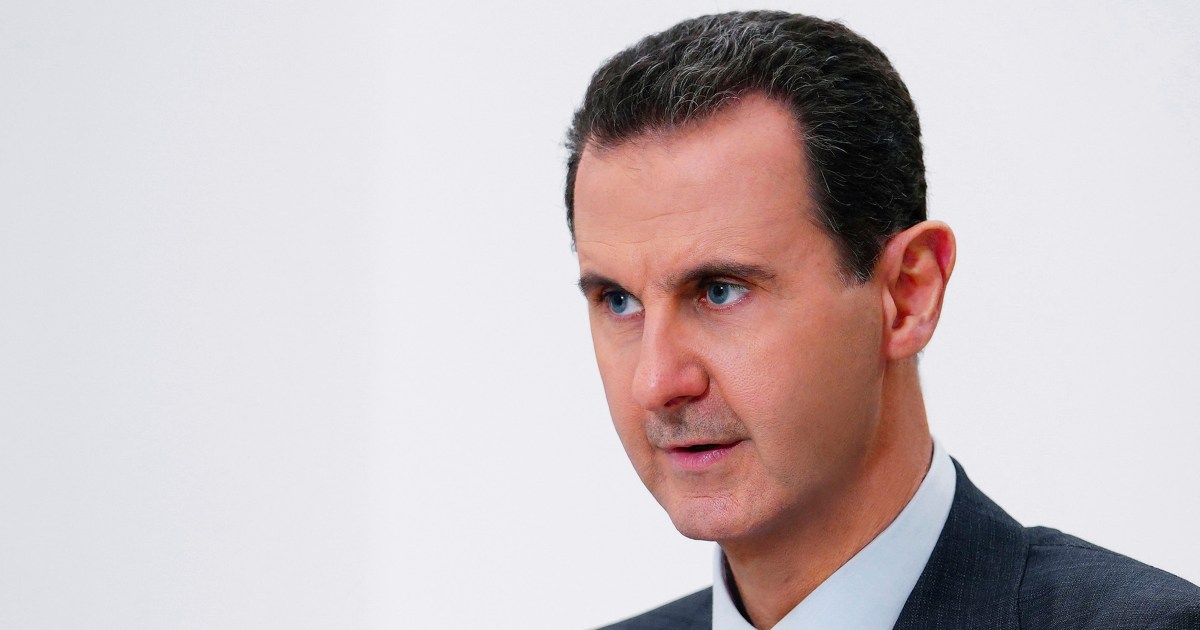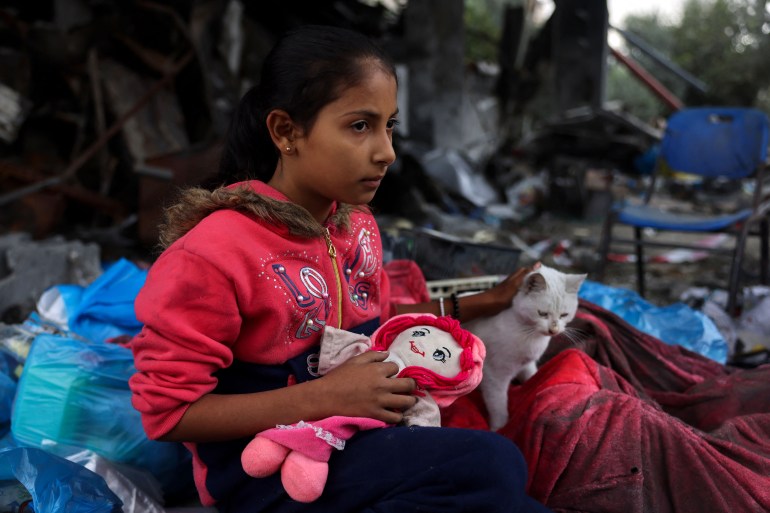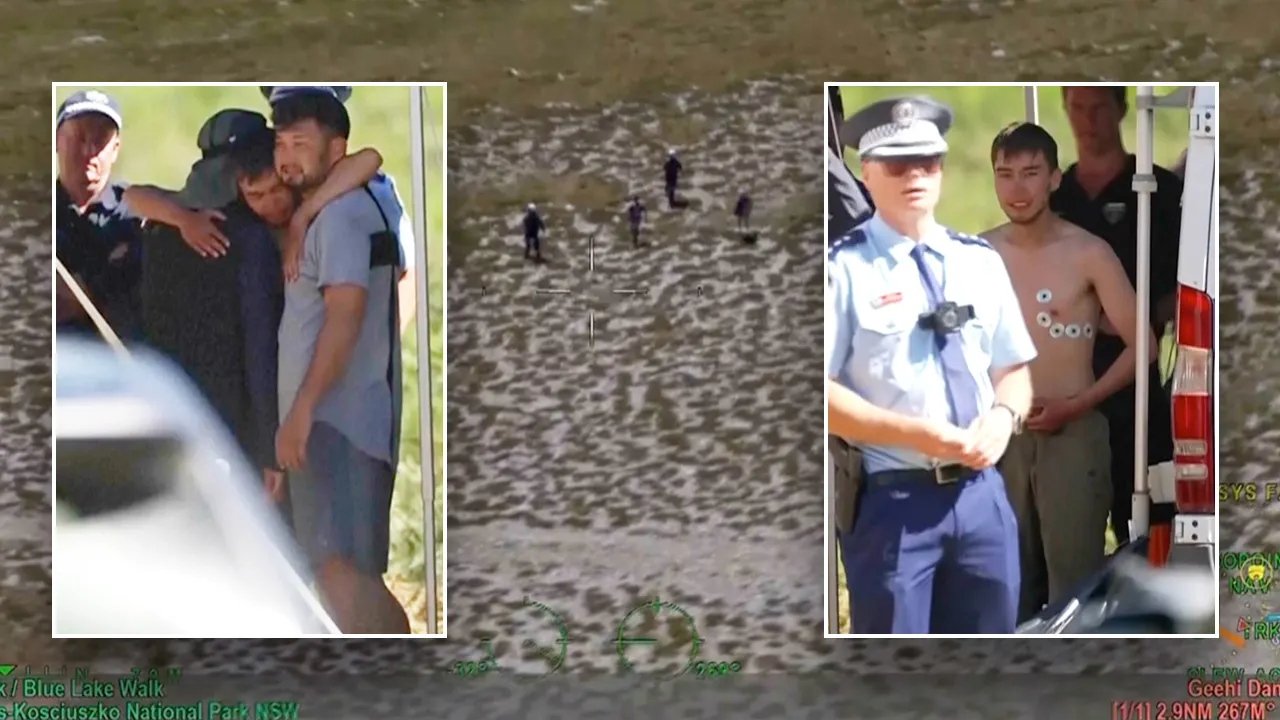World
Syria’s al-Assad and supporting Hamas, for political gain or optics?

The regional fallout from Israel’s war on Gaza has drawn renewed attention to the so-called “resistance axis” – an alliance of sorts between Hamas, Hezbollah, Iran and Syria.
But while Hezbollah and Iran have been visibly active since October 7, the Syrian regime has played a more muted role in support of its on-again, off-again ally, Hamas.
My enemy’s enemy
It was only in October of last year that Hamas formally re-established ties with the regime of Syrian President Bashar al-Assad, more than a decade after they fell out in the early years of the Syrian civil war when Hamas threw its lot in with the Syrian opposition’s revolution.
The reconciliation was reportedly encouraged by Hezbollah and Iran in part to counter the growing number of Arab governments normalising their relations with Israel through the Abraham Accords.
Boxed in by Israel’s tightening siege of Gaza that had been in place since 2007, Hamas was in desperate need of allies. And with the Syrian economy in tatters and Syrian infrastructure increasingly targeted by Israeli air raids, Damascus was in no position to maintain its grudge when its main supporters Iran and Hezbollah were pushing for reconciliation.
Syria’s contribution to Hamas’s material strength is small and unlikely to have played any role in facilitating the October 7 assault.
While Ismail Haniyeh, head of Hamas’s political wing, told Al Jazeera last year that part of the group’s long-range rocket arsenal comes from Syria, the vast bulk of its military stockpiles come from Iran or are domestically manufactured. However, Syria’s position within the broader alliance with Iran and Hezbollah remains a significant factor in the escalation of violence across the region.
“Syria still plays an important role in the Axis of Resistance, simply by virtue of its geostrategic position,” says Nasrin Akhter, a PhD candidate at St Andrews University researching relations between Hamas, Hezbollah and Syria.
“As well as serving as a conduit for the transfer of arms to Hezbollah, Syria provides Iran with a foothold in the Arab-Israeli arena, allowing it to open up a second front against Israel, and giving it a base from which to target US positions in the region.” But within this alliance, the Syrian regime is a “passive actor” argues Joseph Daher, an academic and expert on Hezbollah and Syria.
“Since 2011, Syria has had almost no autonomous role, and is dependent on either Iran or Russia, sometimes playing one against the other,” says Daher. “Any opening of a military front [against Israel] from Syria will actually be launched by Hezbollah or pro-Iranian militias,” with Syria itself, “unwilling and unable to launch a war against Israel”.
Hezbollah’s Secretary-General Hassan Nasrallah admitted as much himself: “We cannot ask more of Syria and we have to be realistic,” Nasrallah said on November 11 in a speech to supporters. “Syria has been undergoing a global war for 12 years. Despite its difficult situation, it supports the resistance and suffers the consequences.”
A battleground for proxy war
Since the start of the war on Gaza, Syria has been the site of attacks and reprisals between Israel and the US on the one hand, and Iran and Iran-backed militias on the other.
Over the last month, the US has conducted multiple air raids in Syria against Iran’s Islamic Revolutionary Guard Corps and its allies, and Israel bombed the airports in Damascus and Aleppo. Meanwhile, Iran-backed militias have struck US targets at least 40 times in Iraq and Syria, according to the Pentagon.
The escalation in violence creates yet more instability in Syria, and “increases the likelihood that Syria will be transformed into a battleground for a proxy war waged by regional and global powers, heaping further suffering and misery on the Syrian people,” says Akhter.
But while Syrians suffer the consequences of the regime’s alliance with Hamas, Assad himself may stand to benefit politically as regional leaders come under increasing popular pressure to change their stance towards Israel.

As the Abraham Accords look increasingly untenable, the Syrian regime’s normalisation with Arab leaders continues apace. In November, al-Assad attended the Arab-Islamic summit hosted by Crown Prince Mohammed bin Salman in Riyadh, Saudi Arabia, standing alongside regional leaders who previously denounced him.
But regardless of the regime’s rhetorical support for Gaza, or the photo opportunities that come with regional summits, al-Assad remains a divisive and unpopular figure.
“The key issue [for the Syrian regime] is not the liberation of Palestine, but its own survival and geopolitical interests,” says Daher.
“Assad’s popularity is already very weak within the country because of the continuous deepening of the socioeconomic crisis, with more than 90 percent of the population living under the poverty line. There will be no significant increase in his popularity as a result of his support for Hamas.”
Akhter agrees: “There is widespread realisation in the Arab world that the Syrian regime is simply championing the Palestinian cause for its own political purposes, in order to deflect attention away from its own domestic human rights violations.
“This will do little to erase the recent memory of atrocities perpetrated by the Syrian regime, with many drawing parallels between Israel’s punishing blockade and bombardment of Gaza with Syria’s siege of the Yarmouk refugee camp, which brought the Palestinian population there to the brink of starvation.”

World
Los Angeles wildfire economic loss estimates top $50 billion

US private forecaster AccuWeather said on Wednesday that estimated damage and economic loss from the California wildfire, already one of the worst in history, is over $50 billion at a preliminary level.
Raging wildfires in Los Angeles killed at least two people, destroyed hundreds of buildings and stretched firefighting resources and water supplies since they began on Tuesday, with fierce winds hindering firefighting operations and fueling the fires.
AccuWeather, which estimates the loss between $52 billion and $57 billion, added that if the fire spread to densely populated neighborhoods the current estimates for loss would have to be revised upward.
“Should a large number of additional structures be burned in the coming days, it may become the worst wildfire in modern California history based on the number of structures burned and economic loss,” AccuWeather Chief Meteorologist Jonathan Porter said.
World
23-year-old hiker found after surviving for 2 weeks in Australian mountain range

A 23-year-old medical student who was missing in a remote Australian mountain range for two weeks has been located.
Hadi Nazari from Melbourne went missing on Dec. 26, 2024, when he separated from two hiking companions to take photos in the Kosciuszko National Park in the Snowy Mountains in New South Wales state, the Associated Press reports.
He survived on two muesli bars, foraged berries and creek water, police said on Wednesday.
His rescue came after he approached a group of hikers on Wednesday afternoon, telling them he was lost and thirsty, Police Inspector Josh Broadfoot said.
UTAH BROTHERS SURVIVE AVALANCHE AFTER ONE PULLS OTHER OUT OF SNOW BURIAL
Aerial footage shows rescuers with Hadi Nazari, who had been missing for two weeks after going hiking. (New South Wales Rural Fire Service via AP)
“This is the fourteenth day we’ve been looking for him and for him to come out and be in such good spirits and in such great condition, it’s incredible,” Broadfoot said, according to Reuters, adding that Nazari was in “really good spirits.”
The hiker had traveled more than six miles across steep and densely wooded terrain from where he was last seen. More than 300 people had searched for him in the national park that is home to the 7,310-foot Mount Kosciuszko.
2 DEAD AFTER SEARCH FOR SASQUATCH IN WASHINGTON NATIONAL FOREST

Hadi Nazari, a 23-year-old medical student from Melbourne, can be seen hugging friends before being taken for medical evaluation after being rescued on Jan. 8, 2025. (New South Wales Rural Fire Service via AP)
Nazari was reunited with his two hiking friends on Wednesday before he was flown to a hospital for a medical assessment, Broadfoot said. Video showed them in a deep embrace prior to his departure.
Weather conditions are mild during the current Southern Hemisphere summer.

Hadi Nazari, 23, can be seen surrounded by rescue crews after spending two weeks lost on a remote Australian mountain range. (New South Wales Rural Fire Service via AP)
Searchers had been optimistic that Nazari would be found alive. He was an experienced hiker equipped with a tent. Searchers had found his campfire, camera and hiking poles in recent days, suggesting that he was continuing to walk.
Ambulance Insp. Adam Mower said Nazari only needed treatment for dehydration.
“He’s in remarkable condition for a person who’s been missing for so long,” Mower said.
The Associated Press and Reuters contributed to this report.
World
Three Gaza hospitals face imminent closure as latest Israeli raids kill 50

The United Nations warns that a lack of fuel supply in Gaza threatens to shut down more medical facilities across the besieged territory, putting the lives of patients and newborns at “grave risk”.
The UN’s condemnation of the “deliberate and systematic” attacks on Gaza hospitals came as relentless Israeli strikes killed more than 50 more Palestinians in the last 24 hours.
Gaza health officials on Thursday said Al-Aqsa, Nasser and the European hospitals are at risk of imminent closure, after repeated Israeli bombardment and blockade of supplies, as they face the same fate as Kamal Adwan, Indonesian and Al-Awda hospitals.
Al Jazeera’s Hani Mahmoud, reporting from Al-Aqsa Hospital in Deir el-Balah, said the facility was now “overstretched” given an influx of more injured civilians, many of them women and children, who had now faced a genocide for 15 months.
“Doctors are reporting about the acute shortage of basic supplies, including surgical tools, antibiotics and painkillers,” he said.
Dr Bushra Othman, general surgeon and a volunteer at the hospital, said the situation is being assessed every 24 hours, as officials attempt to replenish supplies.
“At any time during the day, power and electricity will cut out, and certain areas should be protected such as the operating theatres, the intensive care unit, including the neonatal unit,” she told Al Jazeera.
At Nasser Hospital, Doctors Without Borders warned that the lives of 15 newborns in incubators were at risk due to a shortage of fuel for generators that provide electricity to the facility.
“Without fuel, these newborns are at risk of losing their lives,” said Pascale Coissard, MSF’s emergency coordinator.
Al Jazeera’s Tareq Abu Azzoum, also reporting from Deir el-Balah, said the atmosphere in the Palestinian territory “is quite charged with tension and fear”.
“What we have seen over the past 24 hours has been very bloody. The death toll from the past day has really been staggering,” he said.
On Thursday, the UN agency for Palestinian refugees (UNRWA) renewed its call for a ceasefire. “More humanitarian aid must come into Gaza and a ceasefire is more critical than ever,” the group wrote on X.
Despite the UN’s appeal, Israel continued its bombardment across the Gaza Strip.
Medical sources told Al Jazeera Arabic at least six Palestinians were killed in attacks at dawn in central and southern Gaza, while at least eight others were killed in Jabalia in northern Gaza.
Wafa news agency reported that four Palestinians, including three children, were killed at Nuseirat refugee camp while several others remained missing under the rubble.
Wafa said Israeli strikes killed at least 51 civilians and injured 78 others in the past 24 hours.
Since October 7, 2023, Israel has killed 46,006 Palestinians and wounded at least 109,378 others, according to Gaza’s Ministry of Health.
Meanwhile, Pope Francis on Thursday stepped up his criticisms of Israel’s military campaign as “very serious and shameful”.
In his yearly address to diplomats delivered on his behalf by an aide on Thursday, the pope appeared to reference deaths caused by the cold weather in Gaza, where there is almost no electricity.
“We cannot accept that children are freezing to death because hospitals have been destroyed or a country’s energy network has been hit,” the text of his address said.
-

 Business1 week ago
Business1 week agoThese are the top 7 issues facing the struggling restaurant industry in 2025
-

 Culture1 week ago
Culture1 week agoThe 25 worst losses in college football history, including Baylor’s 2024 entry at Colorado
-

 Sports1 week ago
Sports1 week agoThe top out-of-contract players available as free transfers: Kimmich, De Bruyne, Van Dijk…
-

 Politics7 days ago
Politics7 days agoNew Orleans attacker had 'remote detonator' for explosives in French Quarter, Biden says
-

 Politics6 days ago
Politics6 days agoCarter's judicial picks reshaped the federal bench across the country
-

 Politics5 days ago
Politics5 days agoWho Are the Recipients of the Presidential Medal of Freedom?
-

 Health4 days ago
Health4 days agoOzempic ‘microdosing’ is the new weight-loss trend: Should you try it?
-

 World1 week ago
World1 week agoIvory Coast says French troops to leave country after decades
















